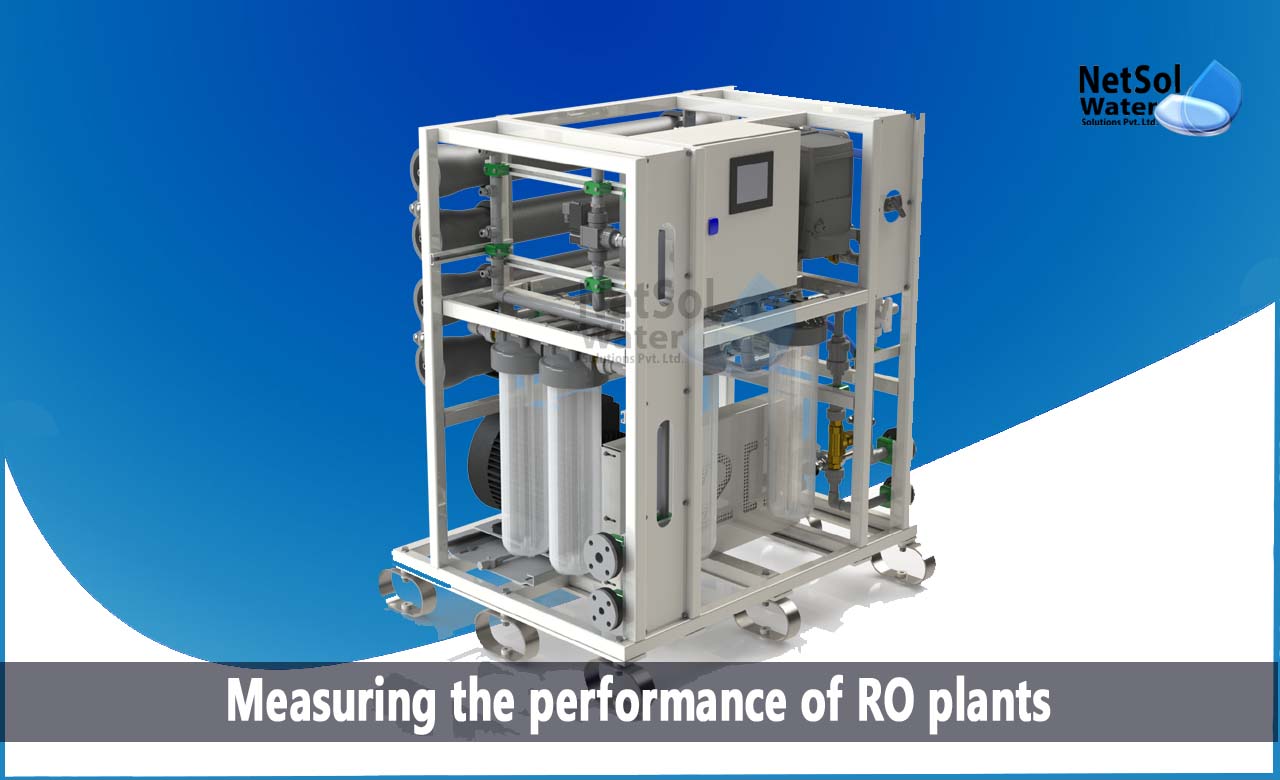Reverse osmosis is a process that uses pressure to push water through a semi-permeable membrane, in order to filter out the bulk of contaminants. When pressure is applied to the concentrated solution during the RO process, water molecules are forced through the semi-permeable membrane, but contaminants are not let through.
Let’s understand how the performance of RO Plants is measured.
How to measure RO performance and design calculations?
A few calculations are used to assess the effectiveness of RO systems, as well as design issues. RO system's instrumentation displays quality, flow, and pressure, as well as additional information like temperature and operation hours.
To accurately gauge the performance of RO systems, the following operational requirements must be met:
1. Feeding pressure
2. Permeate force
3. Increase in pressure
4. Conductivity of the feed
5. Permeate conductivity
6. Feed flow
7. A permeate flow
8. The climate
Parameters affecting RO performance
The permeate flux and salt rejection are the two main performance indicators, of a reverse osmosis system. To reduce the rate of fouling and mechanical damage, a membrane system should be built so that each component functions within a set of suggested operating conditions.
The permeate flux is one of the factors that go into the recommended values, given by membrane manufacturers. The permeate transport rate per square meter of membrane area is known as the flux.
Systems that operate on feed waters of good quality are often designed at high flux values, while systems that operate on feed waters of low quality are typically designed at low flux rates.
In order to prolong the life of the membrane and reduce system issues, Netsol Water Solutions designs its systems in accordance with the recommended limits.
When combined with the necessary pre-treatment and post-treatment, RO technology from Netsol Water Solutions offers comprehensive and sustainable solutions.
Passage of salt in (%)
The amount of salt that goes through the RO system is shown as a percentage. As system performance improves, the salt passage narrows. If the channel contains a lot of salt, it can be required to clean or replace the membranes.
(1 - Salt Rejection in %) = Salt Passage in (%)
Percent recovery
The amount of water that is recovered as permeate or product water, as opposed to being poured down the drain as concentrate is measured as percent recovery.
The more permeated water you preserve and the less concentrated water you flush down the drain, the higher the recovery percentage. However, scale and fouling may develop, leading to more serious problems, if the recovery percentage is too high for the RO design.
The following equation can be used to determine % recovery:
(%) Recovery = Feed Flow Rate/ Permeate Flow Rate * 100
Conclusion
The essential instrumentation for measuring quality, flow, pressure, and additional data like temperature, is included in Netsol Water RO systems. In order to properly maintain and extend the lifespan of the RO system and membranes, this will make it possible to monitor the RO system's performance and spot early-stage symptoms.
Recovery, Salt rejection, Salt passage, and mass balance are some of the numerous performance indicators, which these systems analyse in order to assess RO performance, discover abnormalities, and aid in troubleshooting. These indicators enable us to suggest maintenance, cleanings, or membrane replacements to the clients.
Netsol Water is Greater Noida-based leading water & wastewater treatment plant manufacturer. We are industry's most demanding company based on client review and work quality. We are known as best commercial RO plant manufacturers, industrial RO plant manufacturer, sewage treatment plant manufacturer, Water Softener Plant Manufacturers and effluent treatment plant manufacturers. Apart from this 24x7 customer support is our USP. Call on +91-9650608473, or write us at enquiry@netsolwater.com for any support, inquiry or product-purchase related query.



